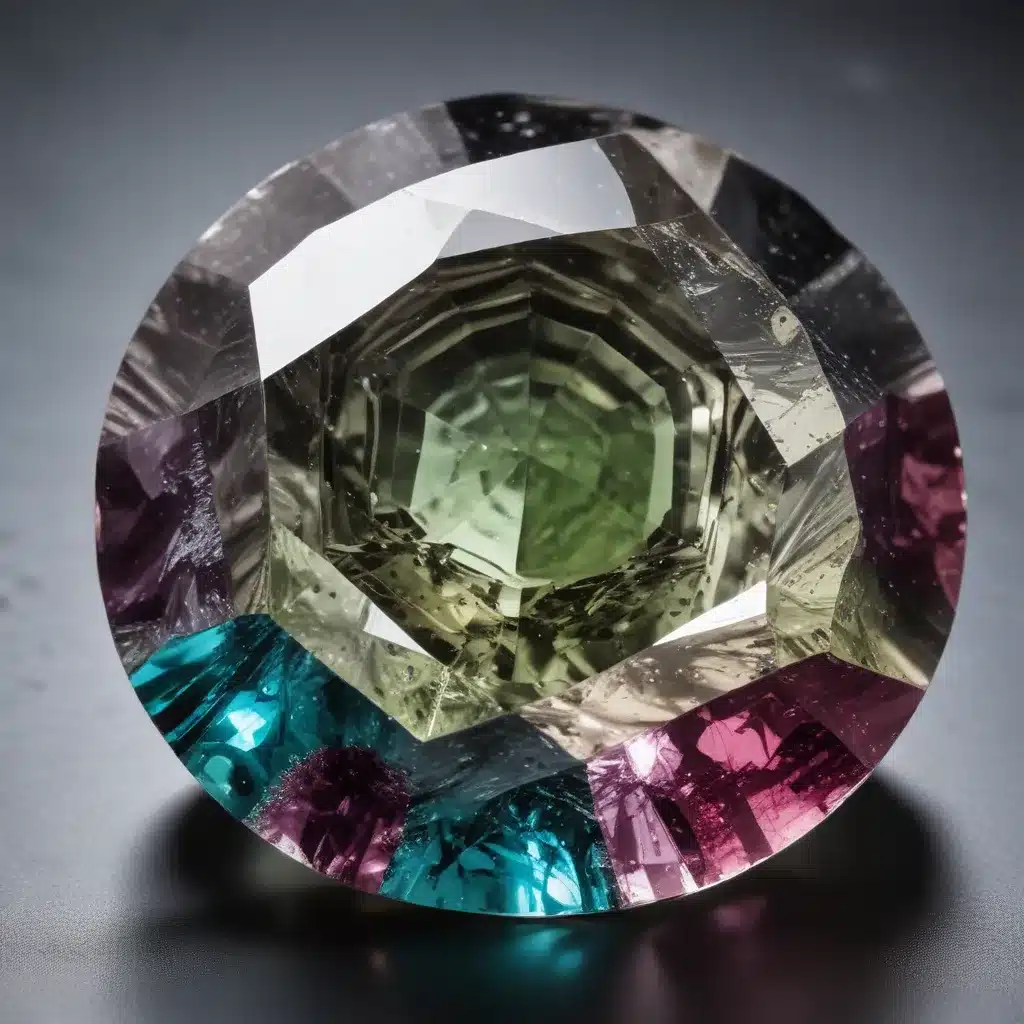
Gemstones are not merely static crystalline structures; they are living, dynamic repositories of light, captivating the senses with their mesmerizing optical properties. From the iridescent shimmer of opal to the elusive color-shifting abilities of alexandrite, the world of gemstones is brimming with extraordinary phenomena that transcend their physical form.
In this in-depth exploration, we delve into the fascinating realms of chatoyancy, asterism, adularescence, and other optical marvels that imbue gemstones with their unique allure. Join us as we unravel the science behind these captivating effects and discover how skilled lapidaries harness the inherent beauty of nature’s creations.
Captivating Chatoyancy
At the forefront of gemstone phenomena stands the captivating chatoyancy, or the “cat’s eye” effect. This rare optical marvel is characterized by a distinct, shimmering band of light that appears to glide across the surface of the stone as it is moved or rotated. The source of this mesmerizing display lies within the gemstone’s internal structure.
Chrysoberyl is perhaps the most renowned bearer of the chatoyant effect, with its vivid, narrow band of light reminiscent of a feline’s pupil. This phenomenon is the result of tightly packed, parallel inclusions of rutile or silk within the gemstone, which reflect and scatter light to create the captivating illusion. Skilled gemstone cutters carefully orient these inclusions to align with the cabochon-shaped crown, maximizing the stone’s cat’s eye allure.
Other gems, such as tiger’s eye and certain varieties of quartz, also exhibit chatoyancy, though the effect may be broader and more diffused. The fibrous structure of these stones, a result of their unique geological histories, gives rise to a shimmering, sun-like luminescence that captivates the viewer.
Asterism: The Star Effect
Closely related to chatoyancy is the phenomenon of asterism, where the interaction of light with specific inclusions creates a striking star-like pattern on the gemstone’s surface. This effect is particularly renowned in star rubies and star sapphires, where intersecting needle-like inclusions of rutile or hematite reflect light to form a distinct four-, six-, or twelve-rayed star.
The precision of the gem’s cut is paramount in showcasing the asterism effect. Cabochon-cut stones, with their rounded crowns, best highlight the star’s symmetry and movement as the stone is rotated under the light. Skilled lapidaries must meticulously align the inclusions to ensure the star’s rays appear centered and well-defined, adding to the gem’s allure and value.
Adularescence: The Moonstone Glow
While chatoyancy and asterism rely on the interaction of light with internal inclusions, adularescence is an optical effect driven by the gemstone’s structure itself. Moonstone, a variety of feldspar, exhibits a captivating, billowing glow that seems to emanate from within the stone, often likened to the soft, ethereal light of the moon.
This mesmerizing effect is caused by the diffraction of light as it passes through the stone’s alternating layers of orthoclase and albite feldspar. The resulting interference patterns create a shimmering, opalescent display that shifts and undulates with the changing angle of light, evoking a sense of mystery and enchantment.
The quality of adularescence is judged by the intensity, uniformity, and movement of the moonstone’s glow, with the finest specimens displaying a well-defined, velvety sheen that captivates the viewer.
Iridescence: The Rainbow Within
Closely related to adularescence is the iridescent effect, where gemstones appear to shimmer with an array of spectral colors. This optical marvel is particularly prominent in opal, a silica-based mineral renowned for its mesmerizing play of color.
The iridescence in opal arises from the interaction of light with its intricate, highly ordered structure of silica spheres. As light penetrates the stone, it is diffracted and scattered by these microscopic spheres, creating the dazzling prismatic display that has made opal a coveted gemstone for centuries.
While opal is the most famous iridescent gem, other stones like labradorite and certain varieties of quartz can also exhibit this captivating effect, adding depth and allure to their natural beauty.
Rare and Extraordinary Phenomena
Beyond the well-known optical marvels, the world of gemstones harbors a wealth of rare and extraordinary phenomena that continue to fascinate both scientists and enthusiasts alike.
One such wonder is the alexandrite effect, named after the gemstone alexandrite. This remarkable color-changing ability allows the stone to appear green in daylight and shift to a vibrant red under incandescent light. This remarkable feat is the result of the gem’s unique chromium-bearing composition, which selectively absorbs and reflects different wavelengths of light depending on the illumination source.
Other rare optical effects include tenebrescence, where certain gemstones, such as hackmanite, can temporarily change color when exposed to UV radiation, and aventurescence, the glittering “gold stone” effect seen in aventurine quartz, caused by the presence of mica inclusions.
Harnessing Nature’s Artistry
The exploration of gemstone phenomena is a testament to the breathtaking complexity and beauty found within the natural world. From the captivating chatoyancy of chrysoberyl to the mesmerizing adularescence of moonstone, each optical marvel represents the culmination of millennia of geological processes and the intricate interplay of light and matter.
At Shelby Gem Factory, we are committed to celebrating the extraordinary optical properties that imbue gemstones with their unique allure. Through our expertise in cutting, polishing, and setting these precious stones, we strive to unlock their full potential, revealing the breathtaking phenomena that have captivated the human imagination for centuries.
Whether you’re a seasoned gem enthusiast or a newcomer to the world of precious stones, we invite you to explore the enchanting realms of pleochroism, dispersion, fluorescence, and beyond. Let us guide you on a journey through the kaleidoscopic wonders of nature’s most exquisite creations, where the interplay of light and matter gives rise to phenomena that transcend the boundaries of the physical world.

